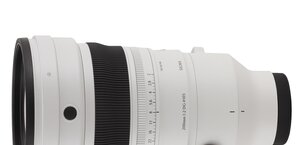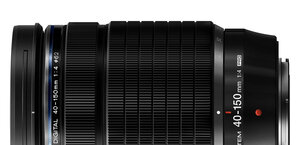Yongnuo YN 50 mm f/1.8
11. Summary
- negligible longitudinal chromatic aberration,
- good control of the lateral chromatic aberration,
- lack of problems with spherical aberration,
- moderate distortion,
- slight vignetting on APS-C,
- very good colour rendition and a sensible overall transmission level,
- attractive price.
Cons:
- not especially solid plastic casing and mount,
- low image resolution near the maximum relative aperture,
- weak performance of the manual focus ring which doesn’t feature any scale,
- loud autofocus,
- huge astigmatism,
- very pronounced vignetting on full frame,
- work against bright light could have been much better,
- high coma,
- random jams of aperture.
At the beginning let’s deal with perhaps the most important issue. It is obvious that the Yongnuo YN 50 mm f/1.8 was inspired and heavily influenced by the Canon EF 50 mm f/1.8 II but those two instruments are not twins. There are a lot of differences: mechanically the Yongnuo is bigger, it has a better manual focus ring, a 7-blade aperture; also its interior build quality is superior, allowing safer interference of the servicemen. Optically both lenses differ as well: they have a tad different focal lengths, slightly different maximum relative apertures and distinctively different coatings. As a result their performance in different testing categories varies: sometimes one lens is prevailing, sometimes the other. The Canon was able to gather more pluses because it is sharper, with lower levels of coma, astigmatism, lateral chromatic aberration and it performs against bright light better. The Yongnuo’s longitudinal chromatic aberration and distortion levels are lower, it has a superior colour rendering, its blurry areas are nicer to look at and its autofocus, although louder, remains also more accurate. A difference in price is an important matter too: the Yongnuo, being almost two times cheaper than the Canon, in Poland costs only 220 PLN. It is really a small amount of money for an opportunity to play with a fast “prime”. What a pity the quality corresponds the price – you get exactly as much as you pay, nothing more.
Please Support UsIf you enjoy our reviews and articles, and you want us to continue our work please, support our website by donating through PayPal. The funds are going to be used for paying our editorial team, renting servers, and equipping our testing studio; only that way we will be able to continue providing you interesting content for free. |
- - - - - - - - - - - - - - - - - - - - - - - - - - - - - - - - - - - - - - - - - - - - - - - -
I’m perfectly aware that there have been several reviews published on the Internet which proclaimed that the Yongnuo is actually better than the Canon in most categories. It stands in stark contradiction to our test results but I am not going to assess other people’s tests as I don’t know their working methods and the way they present the results. Still there might be two good and simple explanations of that. Firstly, at such a low price point I don’t doubt there are great differences between particular specimens of that model. If you happen to have a good Canon lens and a more flawed Yongnuo device you can also get completely different testing results. Secondly, and it is something even more interesting, I suppose many comparisons conducted by amateur photographers might concern the older version of the Canon EF 50 mm f/1.8 II which they have had in their arsenal for several years; now they are comparing it to a brand-new Yongnuo. Knowing the build quality of both lenses I’m pretty sure that even six months of intensive wear and tear might practically finish such an instrument off. It would be the fairest if you compared with each other two new specimens – exactly as we did in our test.
Of course it would be even better if you were able to test five or ten different specimens of a given lens model. Still it would also mean we would be able to publish 5-10 times less reviews on Lenstip.com…






